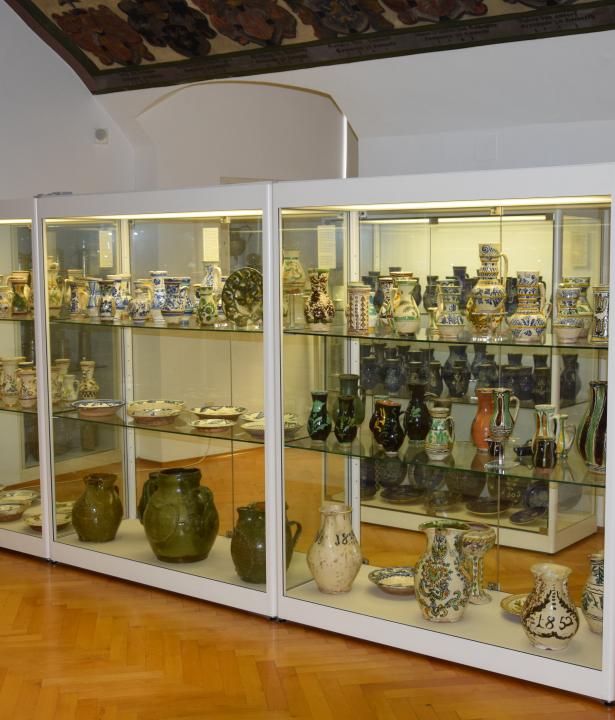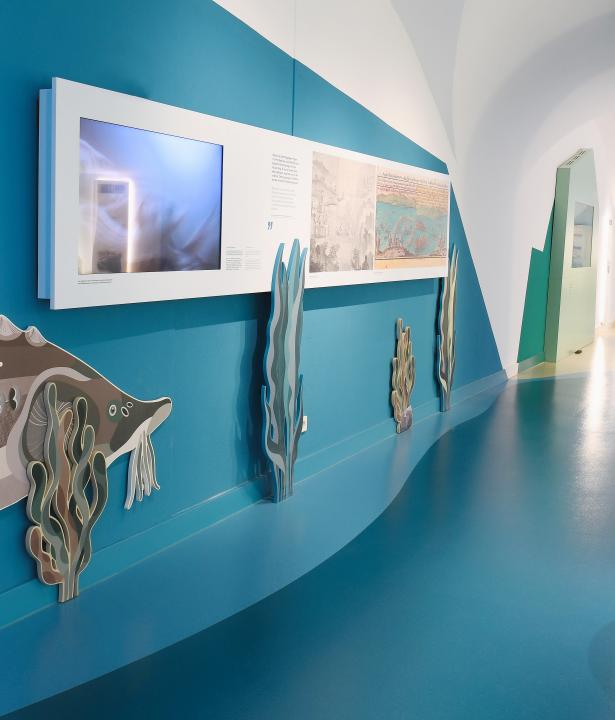From a refugee’s suitcase to a popcorn maker, from the jacket of a forced laborer to a perennial Christmas tree: the holdings of the Danube Swabian Museum convey Danube-Swabian culture and history in a multifarious and eclectic way. An unexpected and special feature of the collection is that many objects accompanied their owners as they fled or were driven from their homes before eventually finding their way to Germany.
Text
The collection of the Danube Swabian Museum currently comprises around 50,000 objects, mainly artefacts from everyday rural culture, especially from the late 19th century to the Second World War. The holdings form a characteristic selection from all Danube Swabian settlement areas and contain many features related to specific occupations and social strata, while objects from urban and industrial milieus are not so frequently represented. There is also a concise and clearly arranged selection of fine arts. An important part of the collection is made up of – mostly private – photographs, which supplement the other artefacts that have been preserved. A further focus is Ulm’s Danube shipping history.
The collection also contains comparative pieces from other ethnic groups and includes items from superordinate historical contexts. A special feature of the collection is that many objects arrived in Germany in the luggage of expellees and escapees; they are linked to specific biographies and memories, which the museum documents in writing. This is the reason why hundreds of kilometers separate the museum’s location in Ulm and the geographical collection area of the museum. The collection grew and continues to grow mainly from private donations from Danube Swabians living in Germany. It mostly comprises simple everyday objects, which nevertheless conjure an unexpectedly diverse range of personal memories and life stories. The eyewitness accounts of their owners have been recorded and archived in the museum and convey the "memory behind the things".
Some common criteria for collecting prove to be irrelevant here, such as the distinction between originals and counterfeits. Within the culture of remembrance of refugees and displaced people, reconstructions (or constructions) of lost cultural assets such as traditional costumes or church models have a considerable identity-building effect. They have therefore been included in the collection alongside the "real" pieces from Danube Swabian settlement areas.
The collection also contains comparative pieces from other ethnic groups and includes items from superordinate historical contexts. A special feature of the collection is that many objects arrived in Germany in the luggage of expellees and escapees; they are linked to specific biographies and memories, which the museum documents in writing. This is the reason why hundreds of kilometers separate the museum’s location in Ulm and the geographical collection area of the museum. The collection grew and continues to grow mainly from private donations from Danube Swabians living in Germany. It mostly comprises simple everyday objects, which nevertheless conjure an unexpectedly diverse range of personal memories and life stories. The eyewitness accounts of their owners have been recorded and archived in the museum and convey the "memory behind the things".
Some common criteria for collecting prove to be irrelevant here, such as the distinction between originals and counterfeits. Within the culture of remembrance of refugees and displaced people, reconstructions (or constructions) of lost cultural assets such as traditional costumes or church models have a considerable identity-building effect. They have therefore been included in the collection alongside the "real" pieces from Danube Swabian settlement areas.
Externe Links
External Image










